The Motor Sport Interview: André Lotterer
Despite Audi and BMW’s much-publicised exit from Formula E, the German-Belgian driver and three-time Le Mans winner André Lotterer remains one of the biggest supporters of the series. We speak to the Porsche devotee about his career so far
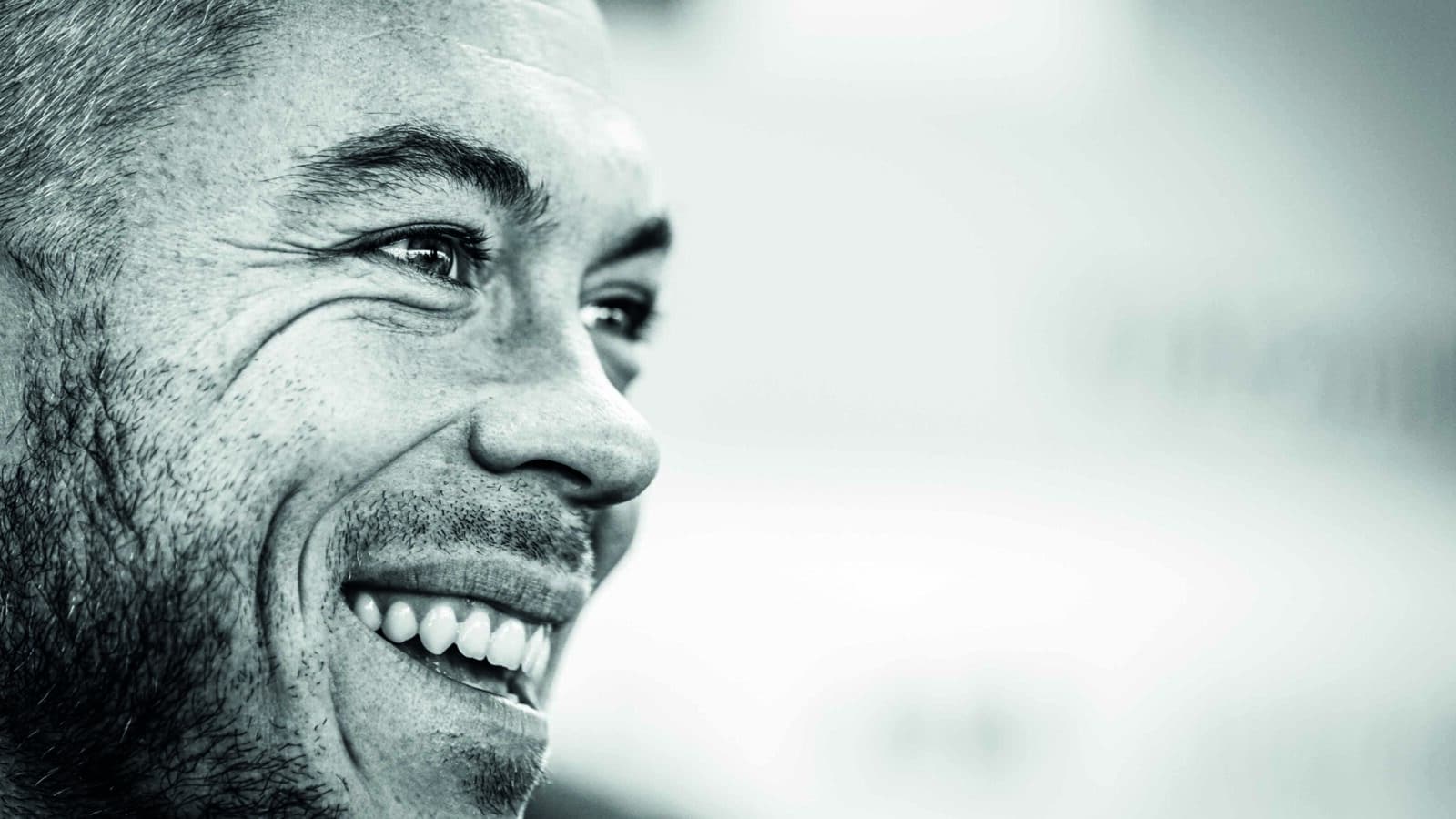
Clement Luck/DPPI
André Lotterer has a hunch he might be the most experienced single-seater racing driver in history, despite his record including just one solitary Formula 1 grand prix start. He must be up there. For much of the past two decades, the 39-year-old has juggled a colourfully diverse dual racing life, consistently logging race starts and miles in open-wheelers while also becoming one of his generation’s greatest endurance sports car racers. Born to a Belgian mother and Peruvian-German father who ran his own racing team, Lotterer remains an openhearted car nut with an unquenchable thirst for speed and power.
It’s somewhat ironic, then, that this modernera racer with a cheeky old-school twinkle in his eye should find himself scrapping around pop-up street circuits in the suffocating, constricted world of Formula E, the all-electric single-seater series that remains contentious and a point-blank turn-off for so many deep-rooted enthusiasts.
Formula E hasn’t been kind to Lotterer so far. In four seasons, two for DS Techeetah and two as a member of the factory Porsche team, he’s yet to win a race. In the most recent campaign he finished a lowly 17th in the standings after a season that featured too many clashes with rivals – although he’s far from alone as a driver of vast experience who regularly finds himself embroiled in controversy, in a series where contact is not only unavoidable but even part of the game.
“Formula E is the biggest challenge I’ve had so far in my career“
Still, he’s committed for another season alongside Pascal Wehrlein and insists it’s a challenge he relishes. Motor Sport caught up with Lotterer before the London ePrix in July – two days before another controversial collision, with António Félix da Costa – where we found the three-time Le Mans winner, 1995 Junior Karting world champion, 2011 Formula Nippon champion, 2012 World Endurance champion and enthusiastic amateur photographer in typically ebullient mood, happy to talk us through his racing life. And despite his focus on Formula E, he also made it clear he’s far from done with the race he remains most associated with and for which he still harbours a burning ambition when a new era begins in 2023: to win Le Mans in a Porsche.
Motor Sport: At this stage of your career, what do you get out of Formula E?
André Lotterer: “Formula E was a refreshing new challenge after all the previous challenges I had. It’s the first time in my career I’ve really been able to race with a purpose. Motor sport was always a platform for manufacturers to showcase their new technologies, especially at Le Mans, but everything changed very quickly [when Audi and then Porsche pulled the plug on their LMP1 programmes at the end of 2016 and 2017 respectively]. Thanks to Formula E we race against climate change and represent the race of the future. We also always bring racing to people in the cities, which is something completely new. For me, it was really cool to join Formula E with this new challenge. To be honest, it’s the biggest challenge I’ve had so far in my career, even compared to Le Mans: racing in the cities, not being able to practice there before, poor asphalt, just one line, any mistake you are in the wall, the energy management, everyone on the same level. You really have to be able to cover everything. Also I’ve never spent so much time with engineers, to develop the software in a smart way. In terms of a challenge, that is what still gives me the kick.”
Other drivers talk about the intensity of Formula E. It does seem to be one of, if not the most, intense forms of motor sport because you have so much going on in a race.
AL: “Yes, definitely. At the beginning when I was watching it while I was racing in other series I didn’t really get it. I was pretty happy racing at Le Mans in LMP1, driving at 350kph. If you are not involved you don’t understand. But then I got involved and it was eyeopening. I asked a friend at the beginning, ‘How do you get excited on the grid? There’s no sound, the lights suddenly go out and you go.’ My friend told me, ‘I get the same goose bumps I did when I used to go to F1 races.’ How? But now I get it, because the races are so intense. On the grid, even though there is silence, the drama is building up. I see it with my family, when they are following it on TV like never before in my whole career. You’ve seen the races: they are unpredictable, there’s drama. In terms of the show, it offers a lot compared to other series. That is what people like to see, regardless of it representing electric mobility. Simply, the competition is very intense, which is essential to any sport. In other categories if always the same guys are at the front it’s not as exciting.”
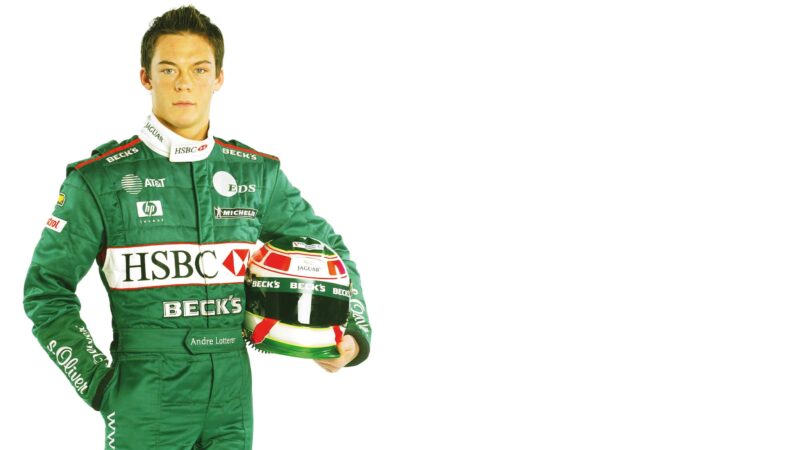
Jaguar’s F1 test driver pictured before the launch of the R3 in 2002, but Niki Lauda stymied his opportunities
Clive Mason/Getty Images
Some might first remember you in the UK from your year in British Formula 3 at Jaguar’s junior team, formerly Paul Stewart Racing. What are your memories of that 2001 season?
AL: “It was a very important time for me to grow as a professional driver. I remember coming to the UK and thinking I was speaking English. I’d been racing in German F3 before and the first half of the year I didn’t understand what the mechanics were talking about, the jokes and so on. Then suddenly it clicked and I grew into it. I learnt a lot that season, the competition was very tough [he won just once, at Donington Park, and finished seventh in the points as Takuma Sato claimed the title]. It was an essential step in my career. I could have stayed another year in Germany and benefited from the experience I had in my rookie season, but I had the opportunity to come here – and in parallel I was able to do more than 20 test days with the Jaguar Formula 1 car.”
You were on the path to F1. What happened?
AL: “There were a lot of management changes at Jaguar. The people I established myself with at the beginning had a plan for me to go from F3 and F1 test driving to F3000, then support me into an F1 seat. But they were not there any more. The management changed twice, and they had different interests – and friends, I guess! They put different people in and the dynamic changed completely. We were supposed to get a shootout to see if they would keep us. But in hindsight I think they had it all pretty much planned out with different intentions. Regardless of whether I was doing well or not, I had to look for something else.”
Jaguar spat out a lot of good drivers at that time, didn’t they?
AL: “Yes. When I joined it was under Wolfgang Reitzle, then he left. Then it was Neil Ressler. Bobby Rahal supported me when he came in and asked me to do a lot of testing, so that was good because I could show myself in F1. I was doing good times and the team liked me. It was looking promising. But then Bobby left and Niki Lauda came in, and he just had different drivers he was interested in. I’m just one guy, there are hundreds of drivers with similar stories about trying to make it in F1.”
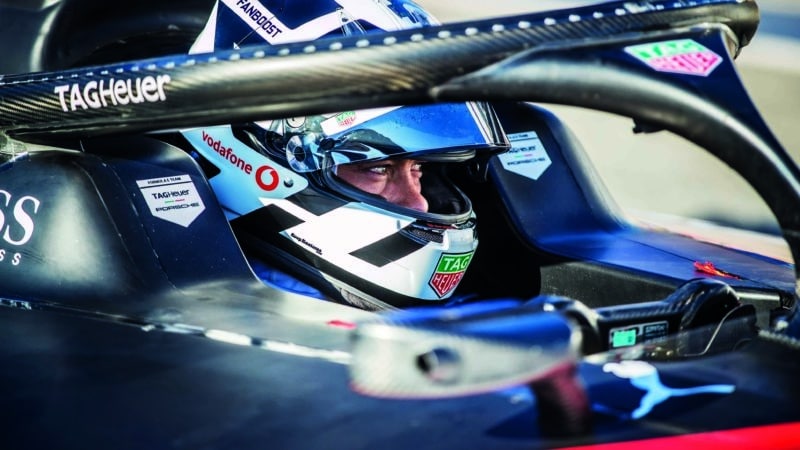
Focused at the 2021 Formula E opener at the Diriyah ePrix; he’d finish the season in 17th
Grégory Lenormand / DPPI
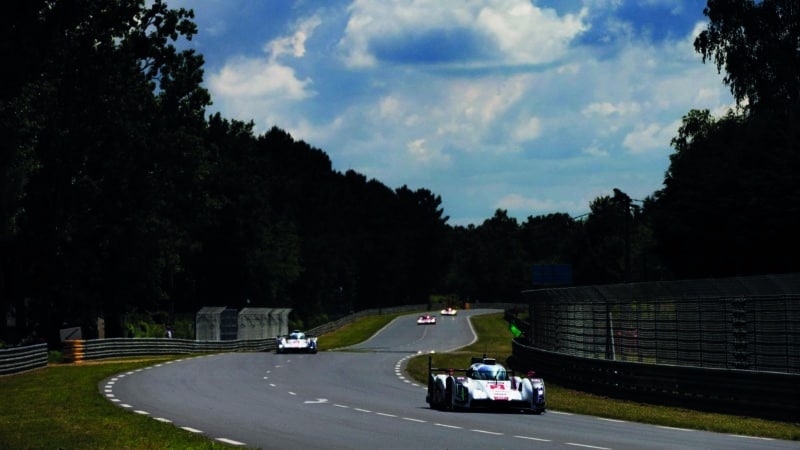
A third victory came at Le Mans in 2014 alongside Marcel Fässler and Ben Tréluyer
Andrew Hone/Getty Images
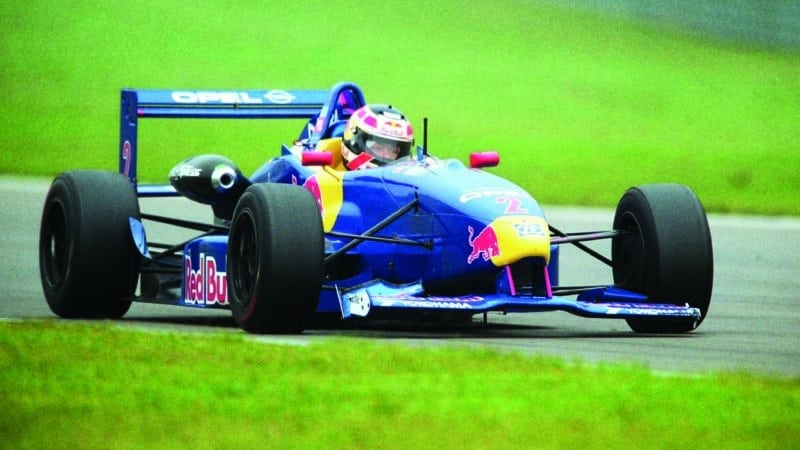
Lotterer scored three wins in the German F3 Championship in 2000 for BS
Christof Koepsel/Bongarts/Getty Images
You went to Japan – and stayed there for more than 15 years. How did that happen and what does that country mean to you?
AL: “It means a lot. It was a completely unknown territory and challenge for me. How it happened was that I was coming to all the F1 races and became good friends with Eddie Irvine. Enrico Zanarini was his manager and he hooked me up in Japan, because Eddie had raced there and still had that link through friends. Enrico got me a test at Nakajima [the team run by former Lotus F1 driver Satoru Nakajima] and I said OK. I wanted to stay in single-seaters and in Europe that was not really something I could have done because I had zero sponsors. I had to find something sustainable. It happened in February 2003, quite late for that season. Robbie Kerr was supposed to get that seat and then he didn’t. Ralph Firman Jr had gone to F1 [with Jordan], which is why it was open. They set up a test, an audition. The team said pack your stuff for two or three months because if you get the job you’ll stay. So I told my girlfriend there was good news and bad news… I got the seat and I stayed five or six months. I started on a very humble deal and established myself from the bottom up. But it was a great opportunity to establish myself professionally in this world, with really good teams and racing fantastic cars.
“Japan is not for everyone but I liked the motor sport passion“
“I was living at the core of my passion, racing Super Formula [Formula Nippon] and Super GT. Great race tracks, great racing, a fun environment. The atmosphere between the foreign drivers was good and every year it was getting better. Every time I signed a oneyear deal, for 15 years. So the first three years I was with Nakajima, then I got approached by different teams and played my way up with a better salary. TOM’S got me into its team and said, ‘Come and live in Tokyo, it will be more fun.’ I made a lot of friends and all the way along there was nothing in Europe that could have been better. I did a few DTM tests and got offered a seat, but I thought, ‘Nah, I prefer to still race formula cars, this is awesome.’ Also driving these super-fast cars really refined my skills. There was tyre development too, so it just kept getting better year after year.
“Some of the guys like Ben Tréluyer were also racing at Le Mans and they said, ‘You should try it.’ The only thing I was looking up to was when I saw these guys racing for Audi: that would be cool, I thought. I don’t know, the stars lined up and I went to do a race in 2009 for the Kolles team [which ran a privateer R10 turbodiesel]. It went well, then the works team took me on. That was my step through a big door back to Europe and the world sports car scene with a parallel programme. I was supposed to stop in Japan in 2012 when the World Endurance Championship started, but I loved it so much I asked Audi if they were OK for me to do both programmes so long as they had priority. My Japanese teams said it was OK if I missed a race, so I managed to do both. I had a really awesome time just doing what I wanted to do.”
Of the seven races in the 2010 Formula Nippon, Lotterer notched six podiums but finished the season second to João Paulo de Oliveira
What a life!
AL: “But Japan is not for everyone. I embraced it. I arrived and I was super-curious, and I liked the motor sport passion. I was playing Gran Turismo with all these cars and when I arrived there they were for real: the Honda NSX and Toyota Supra, iconic cars from the games. The first year I was just there for Formula Nippon, but the NSX was in the workshop. I pushed so hard to drive it, so they swapped the driver for me for the second half of the year and I had a seat in both categories. It was a fantastic experience. Also you are on your own and you have to figure things out, learn another culture and a very interesting one, too. Also in the teams, I had to take responsibility to set up the car myself. It was very cool.”
You were leading this dual life and you established yourself at Audi in one of the great sports car driver partnerships with Benoît Tréluyer and Marcel Fässler. What was it about the three of you that worked so well?
AL: “When I first got to Japan and went for that audition at Nakajima, Ben was there supporting Sébastien Philippe, who was his friend. Because I speak French we were friends from the first day, even though we raced against each other all those years. We used to say it would be so cool to share a car, we didn’t care who was better than the other: we just had fun, had a good life and were good friends. Then we had the luck to get together at Audi, and Marcel came along, who was a long-time friend of Ben’s from their Formula Campus days back in France. It was just one of those friendships that needed no effort. We were just living the dream, so thankful to be racing these cars. We were just having fun basically. We didn’t have to try, it was a natural dynamic. Because we were friends first we respected each other and were not trying to beat each other, and we’d cover for each other if on one day one of us wasn’t on it… Also with our engineer Leena [Gade] it was a good energy. We could be professional, but at the same time have a lot of fun and do it right.”
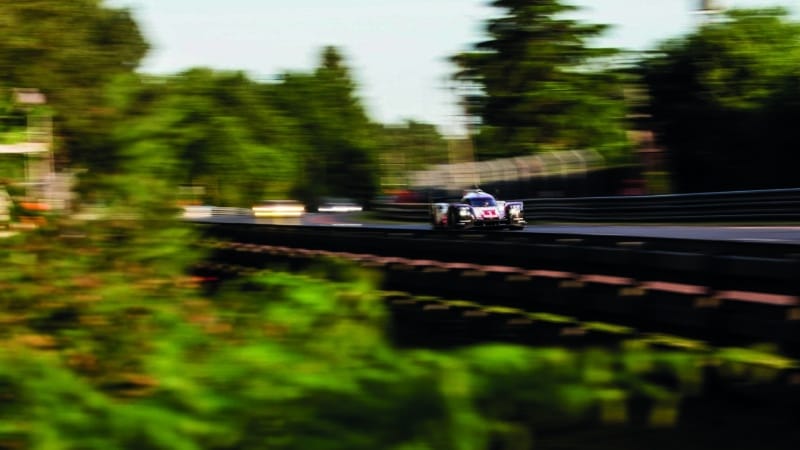
Porsche man Lotterer hitting speed in the 919 at Le Mans, 2017
Jean Michel Le Meur / DPPI
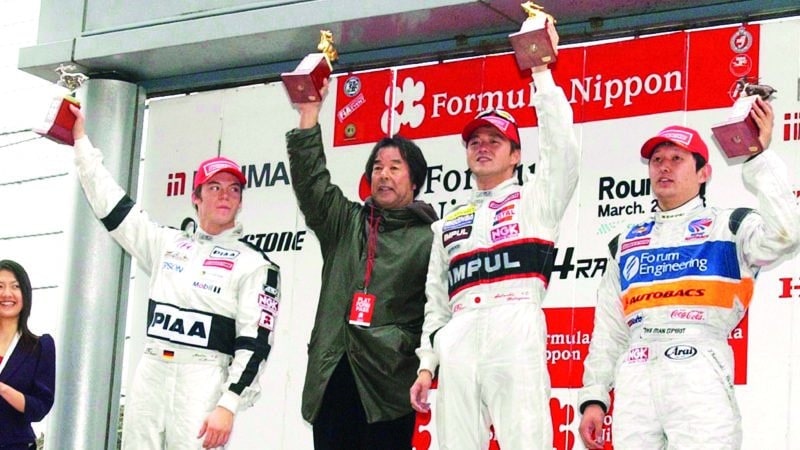
Lotterer (left) at Suzuka in Formula Nippon
Sports Nippon/Getty Images
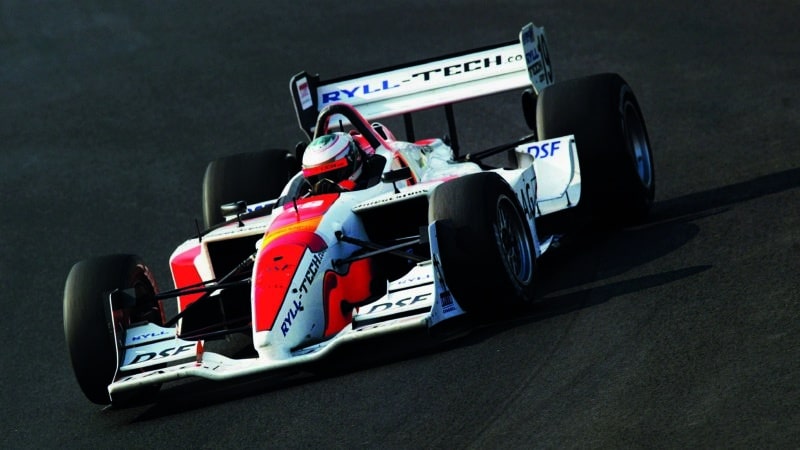
CART 2002 with Dale Coyne Racing
Donald Miralle/Getty Images
In a recent interview with Leena [Motor Sport, July], she told us you all had a sense of honesty with each other, saying exactly what you thought without it becoming personal if it ever got heated.
AL: “Yes, we knew each other’s strengths and weaknesses but not in a critical way. It was also not easy for Leena to be in the team as a woman. There was competition between the engineers. For her to gain respect was something new for the team. They gave her that challenge [of engineering us] and we quickly proved ourselves. We needed to manage her as well – normally the engineer is managing us psychologically. There was always this dynamic of managing each other. Ben knew me like a little brother for 10 years, so he knew me inside out and contributed to my success. He was more technical in the setting up of the car. Honesty was definitely an important part of it.”
You had that wonderful purple patch, winning Le Mans three times out of four between 2011 and ’14. That first year, you were very much the third car as the juniors and the weight of expectation landed on your shoulders when the other two crashed out. What are your memories of that 2011 race and the impact it had on your career?
AL: “It was a big day for us. The build-up was in the year before when we had no shot of beating the Peugeots because they were so much stronger, but they broke [Lotterer and co. finished second in the Audi R15 to teammates Mike Rockenfeller, Timo Bernhard and Romain Dumas]. We were getting more confident. The team was still relying so much on Tom [Kristensen], Allan [McNish] and Dindo [Capello] but we were establishing ourselves. The momentum came gradually. I made a few mistakes that year, but the team kept me on. Then the R18 came out and I flew to Homestead in Florida with Tom to test the car for the first time. It was mega, it fit me like a glove and gave me that extra confidence to play and do anything with the car. Spa came, we didn’t have a good result, but if you read between the lines the speed was there – at the Le Mans pre-test also. It felt like we had momentum, but still we were the underdogs because we had legends at the team you could rely on.
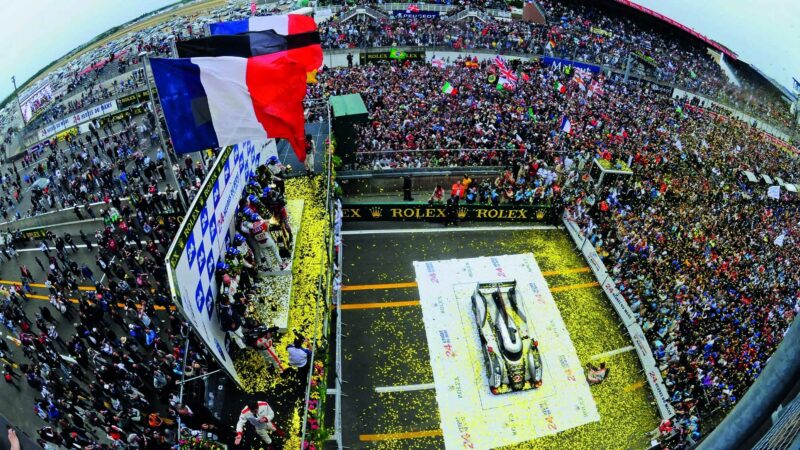
The first of three wins at Le Mans came in 2011 in the turbocharged diesel Audi R18
Frederic Le Floc’h/DPPI
“When the accidents happened it didn’t change so much for us because we were focusing on trying to win the race and the opponents were Peugeot. For the team it was difficult, but for us inside the car it didn’t change so much. It doesn’t matter if you do a go-kart race or a grand prix, you have to drive as quickly as possible and at Le Mans you can get a rhythm lap by lap. We were able to isolate from this pressure. If I look back, oh my God… it was all in our hands and the conditions were difficult, staying on slicks in the rain. Then in the last stint I got a slow puncture and was told I needed to keep going. The weird thing was I thought I was second and Leena was giving me the gaps – and it was increasing, yet I was pushing more and more! How is this possible? How is the Peugeot getting so much of a lead? I was taking crazy risks. Then I pitted for a full service and came out in front. I thought, this is weird… Then I knew we had it in our pocket. We put on four fresh tyres, the Peugeot was six seconds behind and we finished 13 ahead. For us, it changed the dynamic. It gave us confidence, we were fully established in the team, we gained momentum and respect. We were on a roll from then on, and the team was behind us.
“Winning Le Mans is one of those races that changes your life. You feel like you have achieved something and can give back something to all those who have supported your career. It’s a serious achievement that gives you power.”
What was the dynamic like with Tom, Allan and Dindo? They were the legends but you shook things up.
AL: “It was good. To be honest, we owe them because they embraced us, even though I’m sure in some moments there was still competition. They understood it was also important to show us the way. I remember once in a press conference I said something that could be taken as offensive. After, Tom came to me and said, ‘Why do you say this thing? Do you want to be a champion? Do you want to be great? You don’t say this.’ I appreciated it, that he took this fatherly responsibility, even if he was not happy with me. There was a good atmosphere. Maybe sometimes there was friction, like in any team. But overall they welcomed us and we had a good time together. I’m thankful to have been on their side and it was a valuable time in my driving career.”
A fantastic time for you, racing fantastic cars. And then Porsche came in. What impact did that have on Audi?
AL: “A big one, because the team had to react quickly, especially on the powertrain side. Porsche was very advanced being in the top megajoule class, which gave them more performance. Audi restructured because it missed the train a bit on the hybrid side. We were stuck with the flywheel and we didn’t have the battery technology, so it invested a lot in aerodynamics. The car was great to drive because of a good chassis and good aero, but we would lose out on the Porsche big time in a straight line. We were playing cat and mouse. Remember 2015? Marcel was having this great fight with a Porsche, he would pass in the corners, but then pow! They would fly past on the straight. It was quite often that dynamic. Porsche also brought a huge professionalism in terms of operations and pitstops. It came in on its A-game. It pushed Audi to restructure and that doesn’t happen from one day to the other. Finally in 2016 we had the last, more powerful R18, which was still not eight megajoules – it was six. On paper it was a good car, but we had problems because Audi was on the limit with everything and the car was not reliable enough. Then Audi pulled out.”
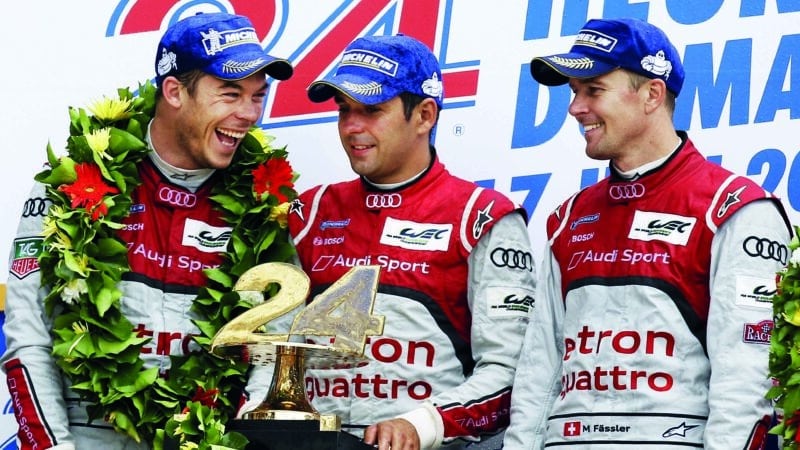
It was a second win in succession at Le Mans 2012 with an Audi 1-2-3
Charly Triballeau/AFP/GettyImages
You are privileged to have experienced both. How did the transfer happen and how did it compare?
AL: “When Audi stopped there were two options: Toyota and Porsche. For me, my dream was to race for Porsche. I grew up with my dad’s race team and there were Porsches all the time. Some kids are for Ferrari and some are for Porsche –I was for Porsche! In combination with Le Mans it was just legendary and when I had the chance to join Porsche I didn’t think twice. I remember my first test, the car was so different to the Audi, I had to relearn how to drive. The concept was still LMP1, you think it should be similar. It was so different. It was much more of a straight-line car because it had more energy recovery that would stabilise the car with the front differential, and the smaller V4 engine had less torque, so on engine braking it was also not so stable. Basically you had to brake late to gain time in a straight-line and cornering was a bit more difficult than in the Audi. I had to drive the corners more in a V-shape, focusing more on the exit. It took a bit of time, and it was also not easy on the low-downforce package [for Le Mans] because we were more exposed to these things. On the higher-downforce package it was a great car to drive in the corners as well. In all, an enriching experience, to explore different driving styles.”
We must ask you about the one grand prix you did, for Caterham at Spa in 2014. How did that come about?
AL “I had a good relationship with Colin Kolles who was running the team, going back to 2009 and my first Le Mans which came together at the last minute. I will always be thankful for that opportunity because it changed my career. So we kept a relationship and he called me up when he wanted to swap drivers [André replaced Kamui Kobayashi]. I know Spa well and he wanted to give me the opportunity. At that stage of my career it was a gift to participate in an F1 grand prix. I didn’t think it would be a big deal, but it was a big thing in the news. The Caterham hospitality was full, there were thousands of questions – wow! I enjoyed being an F1 driver for the weekend. I didn’t test the car, just did a bit of sim work in between my seat fit, so I went to just have some fun and to see what happens. Qualifying went well [André qualified 21st, ahead of team-mate Marcus Ericsson], but unfortunately in the race a fuse popped when I went over a kerb and the car shut down. It was only – almost – two laps. But it was a cool experience regardless.”
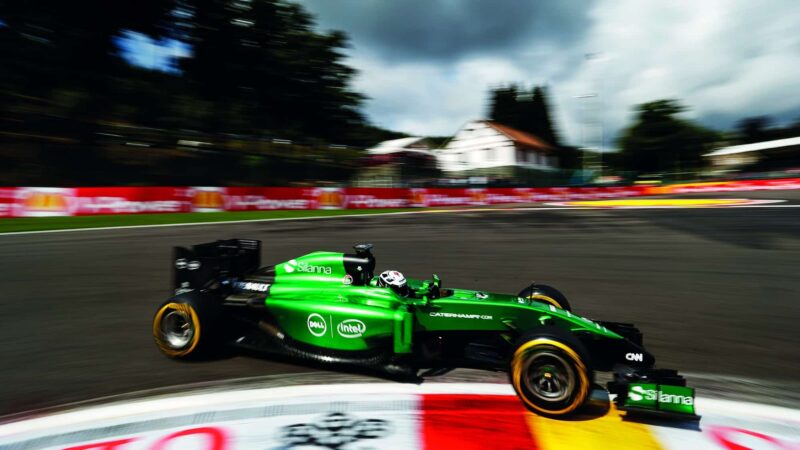
A taste of Formula 1 at Spa in 2014, but Lotterer’s Caterham was soon out of action
Florent Gooden / DPPI
You are part of an elite group that also includes Kristensen who should have had an F1 career, but didn’t. Does it bother you?
AL “No, not at all. I’m very happy with the career I have managed to achieve up to now.”
Speaking of now, where are you at? Formula E has been tough on you, hasn’t it?
“Yeah, there’s been a lot of ‘could’ves, should’ves’! But I’ve had good moments. It’s tough on a lot of people, it’s an unpredictable championship and it keeps the challenge alive. It’s nice to have something like that at this stage because it keeps the motivation.”
So what’s left for you?
AL “First to focus on Formula E and try to win a race. Porsche is still new in this championship so I’m committed to the project to bring the team up. Then long-term… it’s hard to plan in motor sport. I’ve done a lot, but this is what I love to do, I love to race. As long as the challenge is there I’m up for it. Winning is something that always drives me. I’m focused on Formula E, but being a Porsche works driver I’m in good hands and there are things in the future that are coming that can be interesting, too. In 2017 we were about to win together at Le Mans, but unfortunately we had to retire [the No1 919 Hybrid had a lead of 13 laps with three hours to go when it stopped with lack of oil pressure], so that is something I’d love to achieve – to win Le Mans in a Porsche.”
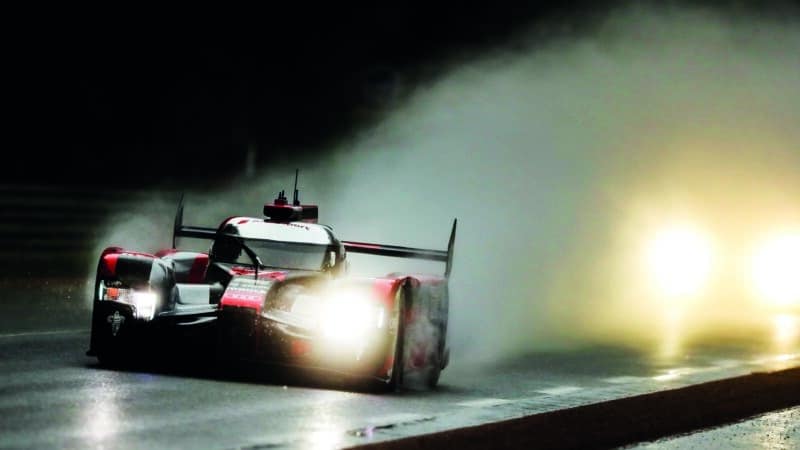
Lotterer’s final Audi drive at Le Mans was 2016, finishing fourth with his faithful band of team-mates Fässler and Tréluyer
DPPI
Everyone is excited about LMDh and what is coming in 2023. You’ll be in your early 40s. Do you feel it will still be realistic for you?
AL “Of course. I feel as fit and motivated as ever, so I don’t think that’s an issue. Fernando Alonso is doing well in F1 at 40. Tom, Allan and Dindo were very competitive into their mid-40s, so that is definitely something that can work from my side.”
We’re all excited about what is to come…
AL “Yes, it’s great for Le Mans. For now it’s a shame not to have more manufacturers, so the FIA and ACO have done a good job to put things together. I don’t know how many brands there are going to be – but it looks like a lot at the moment [Porsche, Audi, Ferrari, Toyota, Peugeot, Cadillac, plus perhaps BMW and Honda’s Acura brand]. Yes, it is exciting.”
